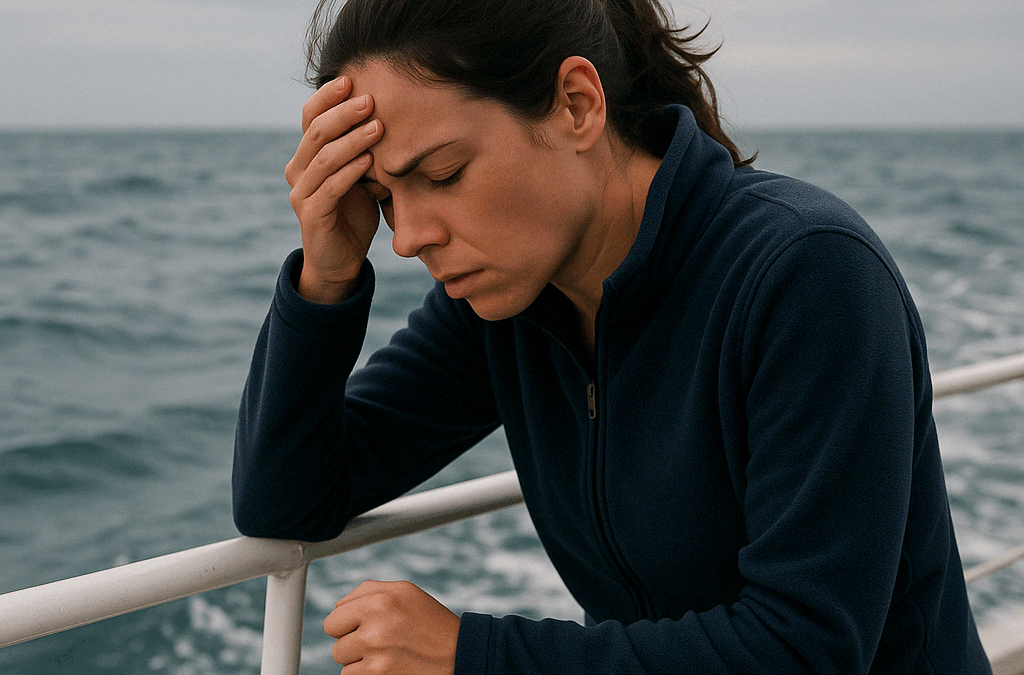Picture this: you’re out on a boat, the sea is calm, the sky is clear—and then, out of nowhere, your stomach starts turning. That’s seasickness, a surprisingly common issue for both beginners and experienced sailors alike. But what exactly causes it, and how can you prevent it before it ruins your trip?
Seasickness is a type of motion sickness, medically known as kinetosis. It occurs when your brain receives mixed signals from your senses. For example, your eyes might focus on the still interior of a cabin, while your inner ear feels every movement of the waves. This sensory mismatch confuses your brain, often resulting in symptoms like nausea, dizziness, cold sweats, and in more extreme cases, vomiting or even fainting.
Interestingly, this unpleasant reaction actually stems from an evolutionary survival mechanism. In prehistoric times, conflicting sensory input could signal that a person had ingested something toxic, possibly causing hallucinations. The body’s response? Trigger vomiting as a defense. While that might’ve been helpful on land, it’s not so great when you’re just trying to enjoy a boat ride.
Many people find that symptoms become significantly worse below deck. That’s because enclosed spaces give the illusion of stability. Visually, everything looks still—but your inner ear knows better. Every roll and sway of the boat is still being processed by your vestibular system. Combine that with stale air, high humidity, and unpleasant odors (especially in cramped toilets), and the brain’s confusion—and your discomfort—only increase.
Natural Remedies for Seasickness
If you’re prone to motion sickness, there are a number of natural remedies worth trying:
- Ginger: Fresh, in tea, or as a supplement—known for calming the stomach.
- Vitamin C: May reduce histamine levels, which are linked to nausea.
- Peppermint oil: Inhale or apply to the temples for soothing effects.
- Acupressure wristbands: Stimulate the P6 pressure point on the wrist.
- Hydration and light meals: Avoid heavy or greasy foods and drink water regularly.
Behavioral Strategies That Can Help
In addition to natural aids, some practical behavior changes can make a big difference. Try to:
- Go out on deck and keep your eyes on the horizon to align your senses.
- Take the helm if possible—being in control helps reduce symptoms.
- Lie down and close your eyes to minimize conflicting input.
- Get fresh air, especially a breeze on your face, for quick relief.
Medical Treatment Options
For those who need something stronger, the following medications can help prevent or reduce symptoms of seasickness:
- Dimenhydrinate (e.g., Dramamine): Best taken 30–60 minutes before departure.
- Meclizine: A longer-lasting antihistamine with fewer sedative effects.
- Scopolamine patches: Applied behind the ear, ideal for longer trips.
- Suppositories: Useful when nausea prevents taking oral medication.
Always consult a doctor before taking medication, especially if you have preexisting conditions or are taking other drugs.
When Seasickness Becomes Serious
While seasickness is usually temporary, it should not be underestimated. Repeated vomiting can lead to dehydration, weakness, and even circulatory collapse in extreme cases. At sea, where access to medical care is limited, this can become dangerous. In such cases, IV or rectal rehydration might be necessary, and in some situations, emergency evacuation could be the only option.
It’s also important to treat the condition with the seriousness it deserves. Don’t try to „tough it out“ or ignore it. One common but risky mistake is leaning over the rail to vomit. This might seem convenient, but in rough seas it’s incredibly dangerous—you could lose balance and fall overboard. Instead, use a dedicated bucket. Afterwards, have someone who is not affected by seasickness safely empty it overboard.
Even Experienced Sailors Get Seasick
Think you’re immune because you’ve sailed before? Think again. Even seasoned skippers can be affected, especially in unfamiliar or extreme conditions. The key difference is that they recognize the early signs and act quickly—by taking medication, getting fresh air, or adjusting their behavior before things get worse.
Final Thoughts: Respect the Sea, Be Prepared
Seasickness is not a sign of weakness. It’s a natural reaction to an unfamiliar sensory environment, and it can affect anyone. The good news is that, with proper preparation, awareness, and a few smart choices, you can prevent or manage symptoms and still enjoy your time on the water.
Be proactive—prevention is much easier than recovery. And above all: respect the sea. Your safety and that of your crew depend on it.
Because nothing ruins an ocean view faster than leaning over the side of the boat. Stay smart, stay prepared, and enjoy smooth sailing—inside and out.

